geographies of urban filth by liyang zhang architecture + design rethinks the spatial, cultural, and social constructs of dirt and cleanliness through an intervention at the north toronto wastewater treatment plant. examining how such concepts are bound to issues of class and race, the thesis proposes to insert a public space and bath within the facility, which is located centrally to three physically and socially disconnected neighborhoods of different income levels and ethnic groups.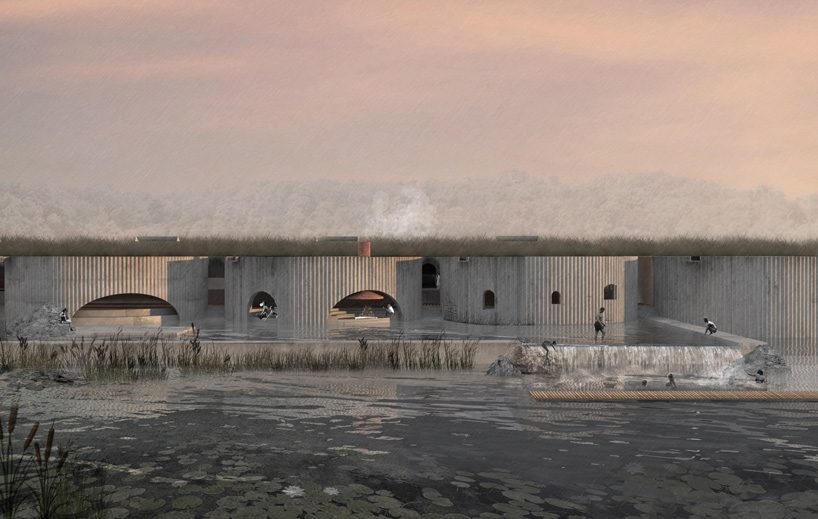 all images courtesy of liyang zhang
all images courtesy of liyang zhang
studying how our cultural understanding of dirt and cleanliness is bound to issues of class and race, and how it is manifested within urban and spatial design, liyang zhang has developed a theoretical approach which questions our current conventions and practice of categorizing spaces, unearthing and bringing us in touch with the rejected ‘other’ within the city and within ourselves. ‘boundaries are formed between clean and dirty, familiar and foreign, us and them, through the rejection of matter that is disturbing or threatening to us,’ notes the canada-born, new york city-based designer. ‘the city carries with it multitudes of identities, consequently forming divided groups and communities within spaces of belonging and exclusion.’
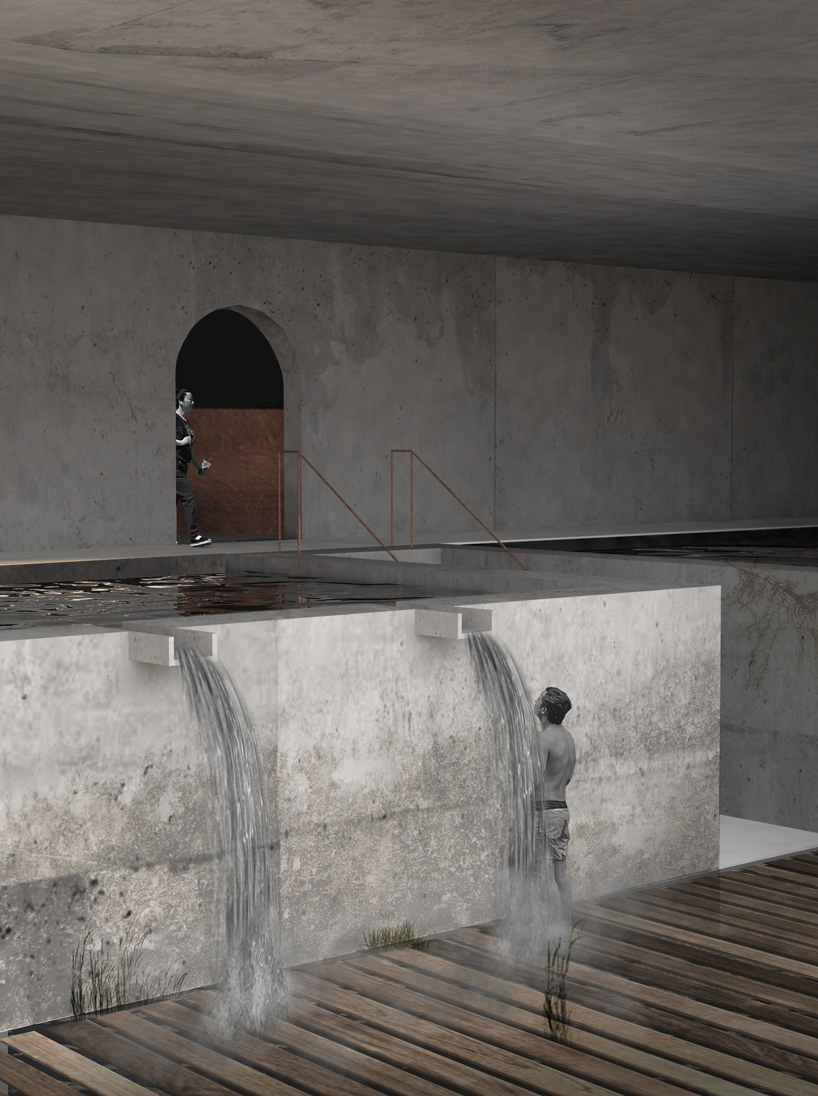
supervised by rick andrighetti, university of waterloo, geographies of urban filth has been developed based on existing ideas of identity and otherness by julia kristeva, R.D laing, krzysztof wodiczko and mary douglas. ‘in julia kristeva’s essays on abjection, she describes abjection as the discomfort caused when impurities and contamination become a threat to one’s own identity and order,’ liyang zhang points out. ‘it is when borders that are meant to protect us from the other, become ambiguous. the inherent fear of the abject breeds an obsession for purity which erases opportunities to engage with and understand those other to ourselves.’
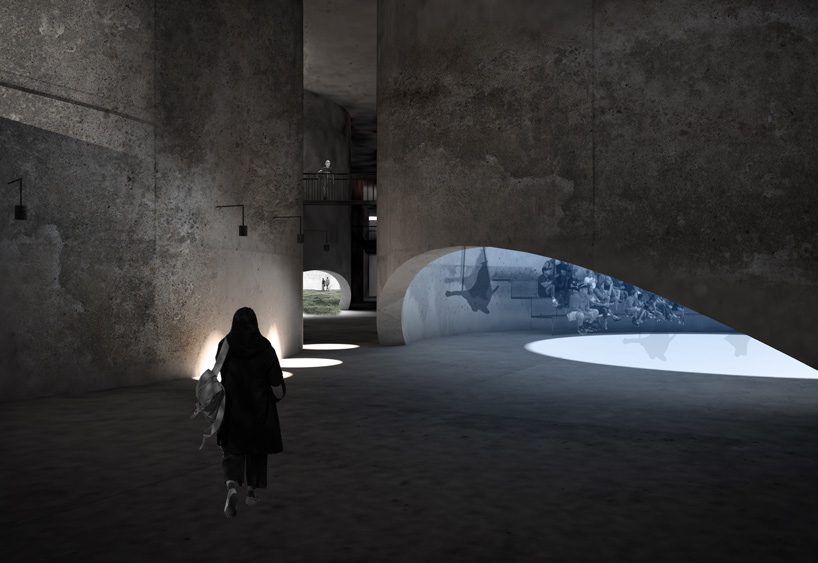
these ideas are explored practically through the intervention at the north toronto wastewater treatment plant, which sits disguised below city level within the don valley ravine, collecting and filtering wastewater from three neighboring communities and releasing it back into the don valley river. ‘mary douglas examines our cultural understanding of dirt asserting that dirt only exists through our categorization of space,’ the designer notes. ‘materializing these ideas into spatial design, the design proposal seeks to challenge the tension that the pure vision of the city has with its dirtier and wilder counterpart which is the wastewater treatment plant, the ravines, and the sewers.’
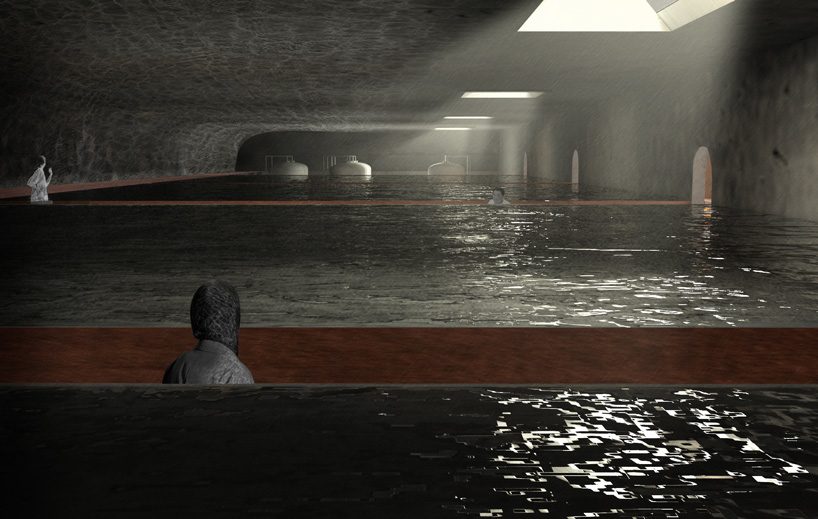
the design proposes the breaking down of boundaries between what is perceived as ‘clean’ and ‘dirty’ by inserting a public space and bath within the wastewater treatment facility. the departure from the safety of the familiar city, and entrance into ambiguous marginal territories, allows one to experience moments of vulnerability where the questioning of one’s own identity and reflection of one’s own strangeness allows for a deeper understanding of the other. with the appropriation of the wastewater treatment plant, the strangeness of oneself within the foreign environment allows the stripping of borders to confront the strangeness of another. 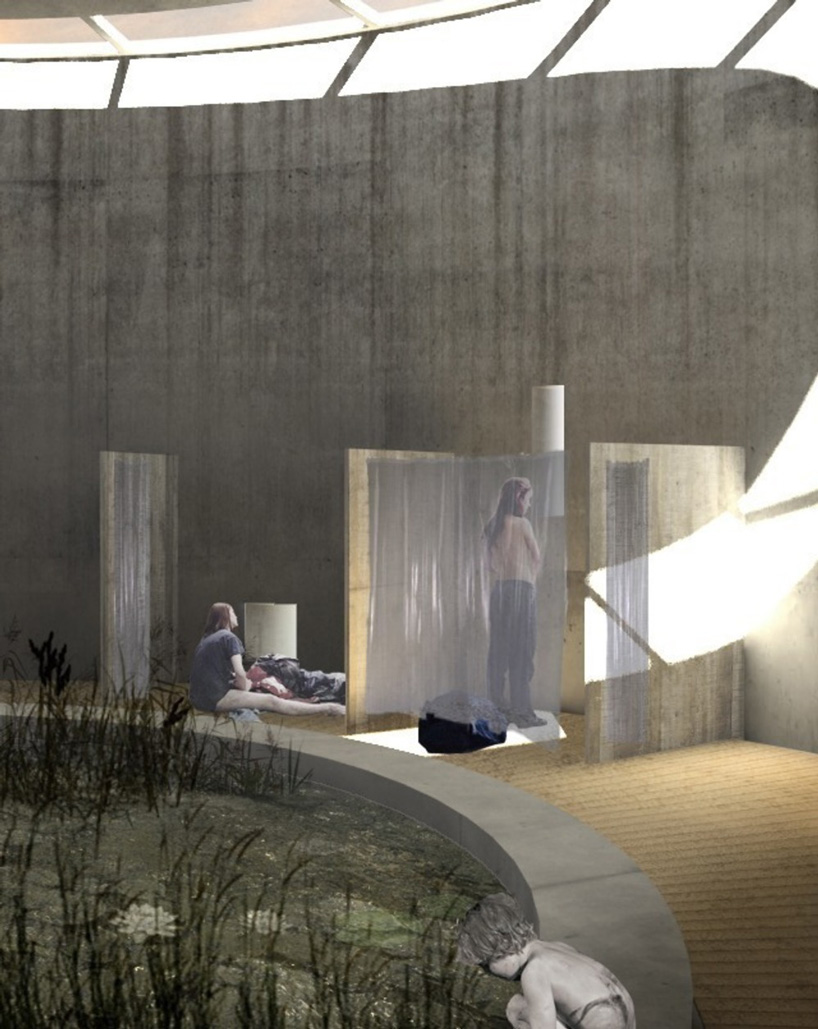
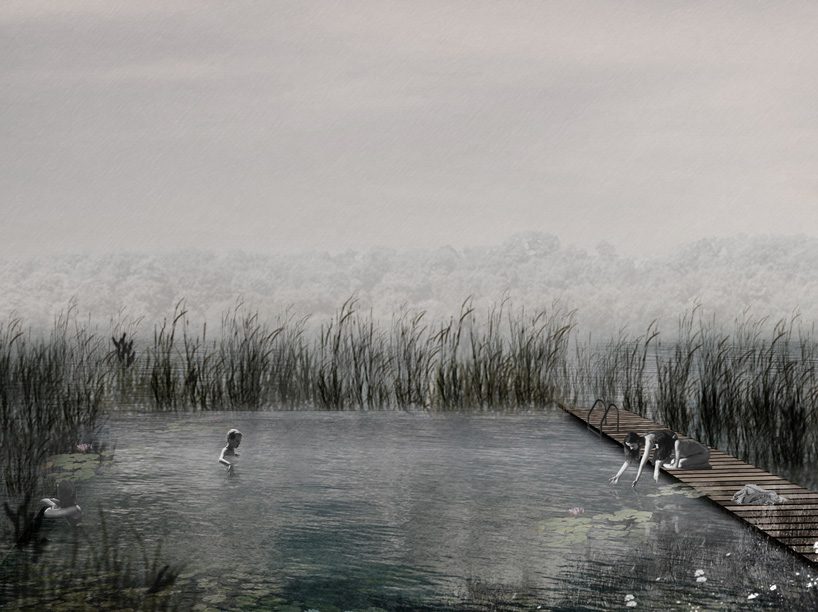
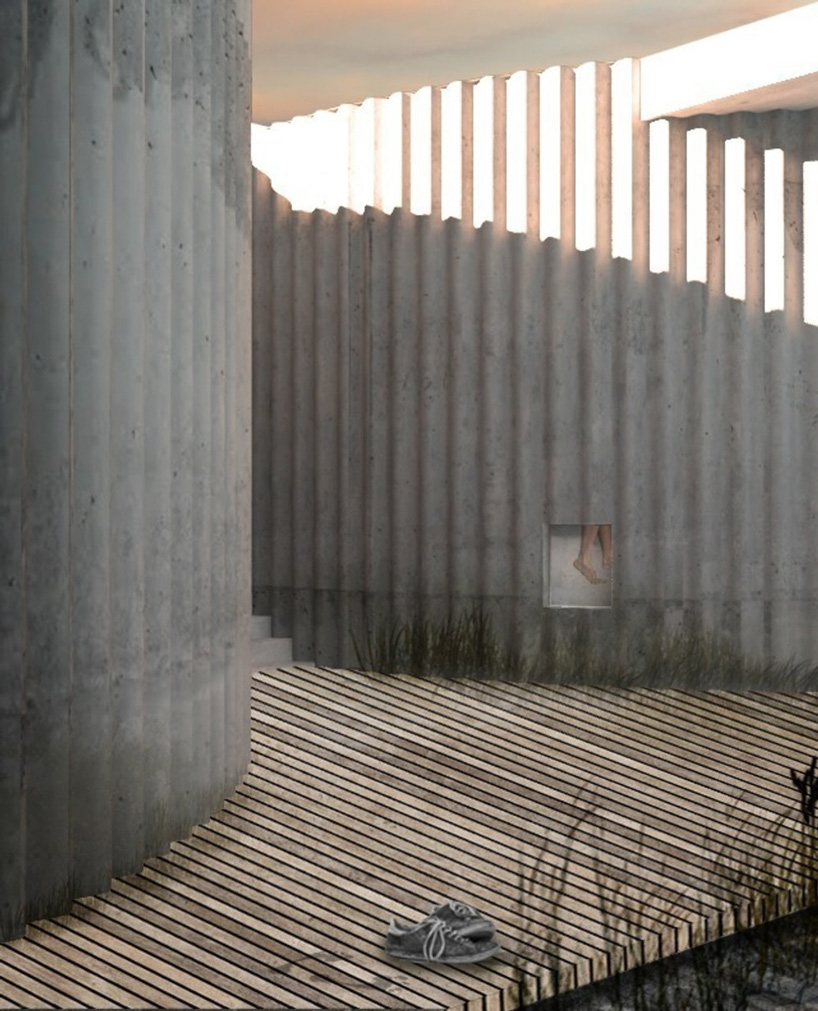
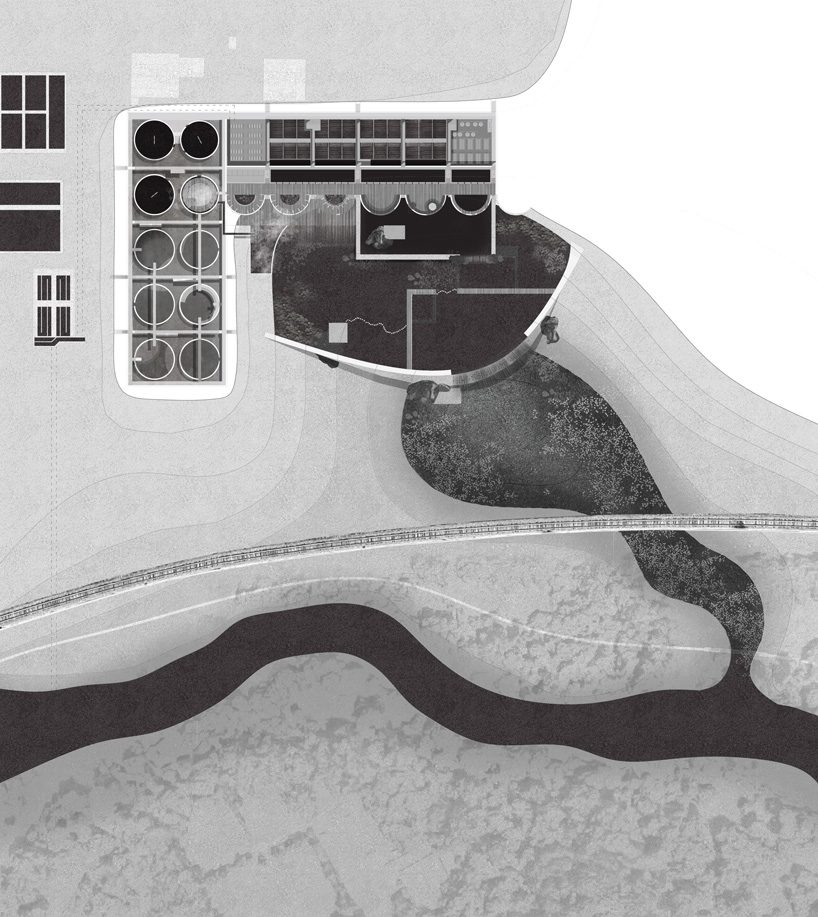
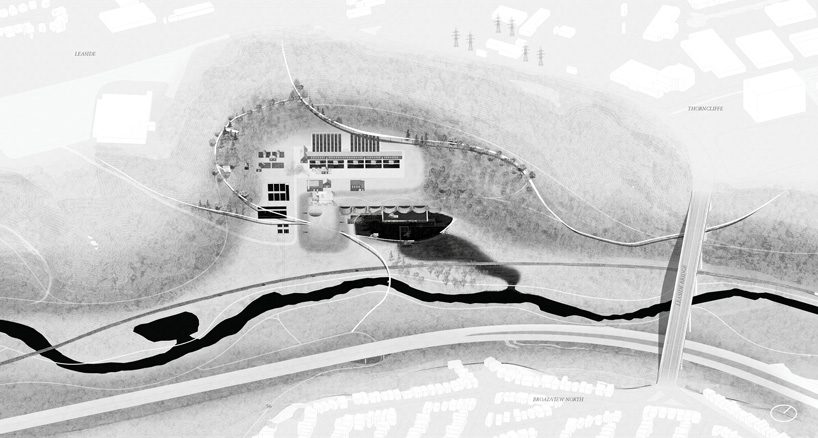
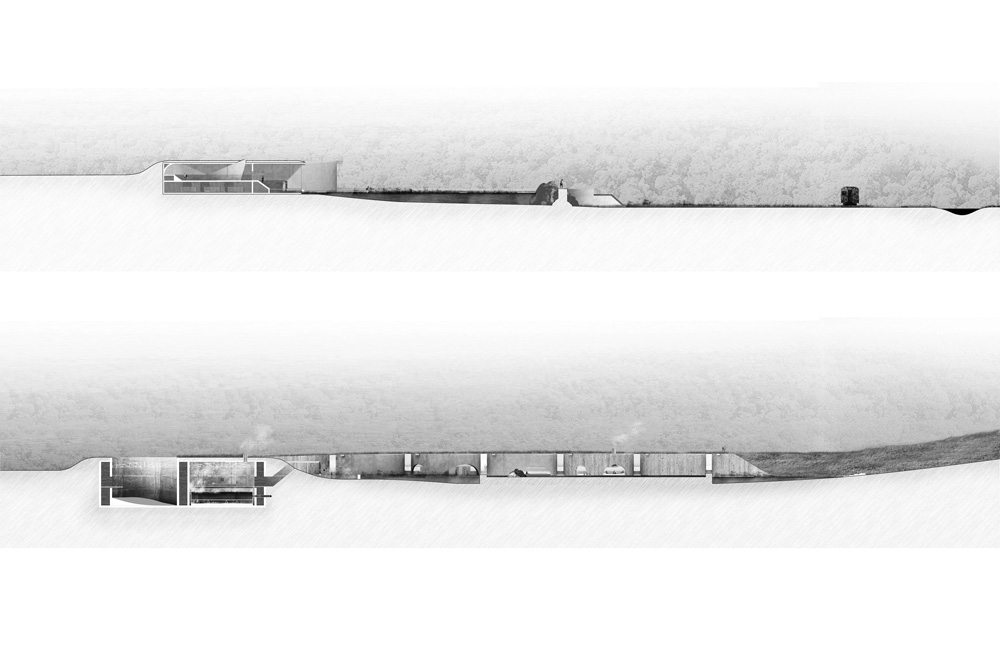
project info:
name: geographies of urban filth
architect: liyang zhang architecture + design
supervisor: rick andrighetti, university of waterloo
type: academic
location: toronto, canada
sofia lekka angelopoulou I designboom
jul 25, 2019
The post liyang zhang inserts a public space + bath in north toronto’s wastewater treatment facility appeared first on Architecture Admirers.
